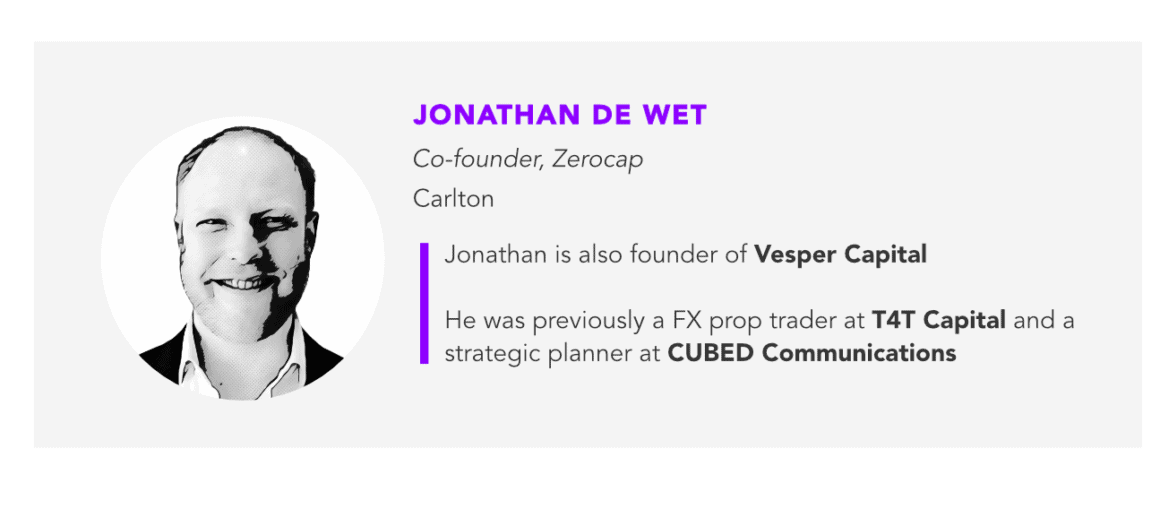Back in March 2020, in the early stages of the Covid-19 crisis, U.S. unemployment claims had a 30 sigma event, otherwise known as a “black swan” event. For those who remember the bell-curve from school, 30 sigmas is basically a long way from “likely.” In fact, it’s a very long way away from “unlikely.”

During these early phases of the Covid response, markets took aim at liquidity. Anywhere they could deleverage and source liquidity was fair game — equity markets took a dive, gold did the same, and bitcoin joined the party. Over the following weeks and months, as the world’s pandemic responses became clear, equity markets began to pump again. The Nasdaq and S&P 500 have broken all time highs, followed a few months later by the MSCI World Index (basket of weighted global equities). We saw the inflation of asset prices post the Global Financial Crisis, but not at the pace of recovery that we have seen during the Covid-19 pandemic. This crisis is different to the last, and there is still an opportunity to position for the next economic cycle.
There are two key shifts that we expect to see in the coming months and years:
- Inflation
- Shift from leveraged growth investing, to value stocks and commodities
Quantitative easing
QE measures have already outpaced the 2008 Global Financial Crisis (GFC). The U.S. Federal Reserve has already distributed three times the amount of federal stimulus, and in a shorter period of time, than the GFC response. The expansionary policies are not unique to the United States: the aggregate G6 balance sheet has ballooned to over US$24 trillion. QE alone will not necessarily spur inflation (as measured through Consumer Price Index, or CPI). We witnessed this after the GFC, record low rates and stimulus, yet a struggle to maintain stable targeted inflation.
There are a confluence of factors with the Covid-19 crisis that could trigger unexpected, and volatile upward inflation.
- Supply chain disruptions during and post-Covid-19
- Increased supply chain costs from deglobalization
- Erosion of purchasing power and the value of fiat currencies
- Increasing focus on fiscal deficit spending
- Demand driven inflation in essential goods
Just prior to Covid-19, the structural factors for unexpected inflation in the economy were already there: ballooning debt, global power dynamics shifting between the U.S. and China, protectionist trade policies, and a growing wealth divide. The pandemic has lit the fire under these structural issues, and brought with it supply chain shocks.
Oil is a great example of this. With the combination of the shift to renewable energy and demand-led destruction due to Covid-19, many of the major wells have come offline. To “turn” these back on can take up to 18 months. Inflation can be a function of demand (driven by stimulus, employment, wages), or supply shortages or shocks. While we are not seeing this reflected in the oil price yet, recovery from the pandemic could see a combination of both demand and supply forces leading to energy-driven inflation. When the cost of energy spikes, so do all of its associated supply chains, procurement channels, distribution wholesalers, retailers and so on.
See related article: US bills could shake up cryptocurrency exchanges and ICO prosecutions
In order to hedge out declines in purchasing power and economic instability, you need assets that are of a scarce nature, and preferably liquid. As mentioned, we saw the rush for liquidity during the March 2020 deleveraging. What was interesting was the dislocation of the gold futures prices, gold paper prices and physical gold prices between London and New York. The supply chain disruptions caused a rupture in physical and futures derivatives spreads, owing to concerns around the ability to actually settle these futures.
This is where bitcoin can add great value as a scarce, yet liquid alternative to traditional hard assets, truly borderless and designed to never exceed its ultimate supply cap.
Economic cycles of different asset classes
As in life, various asset classes move in a cyclical fashion. Commodities tend to move in supercycles — through multi-year booms to dramatic busts. In the past 227 years, there have been six commodity peaks. The most recent cycle peaked in 2008. This cycle was largely driven by emerging market demand and slow supply-growth. Since 2008 we have essentially been in a commodity bear market. Global growth has slowed in GDP terms since 2010, emerging markets have struggled with structural challenges and China’s economy has shifted from manufacturing to a services-driven economy.
An inflationary environment would put pressure on this divergence, encouraging a healthy rebalancing, a return to the mean. Commodities offer a scarce supply, real hard assets, and a hedge against devaluation of purchasing power. We are already seeing gold and copper building some upside interest, and we expect other commodities to follow as the inflationary pressures begin to take hold — agriculture, miners, and hard asset businesses with strong balance sheets.
Bitcoin as digital gold
Like value stocks and commodities, adding bitcoin to a balanced portfolio has huge potential in the coming months and years. It’s an asset that has limited overall supply, and basically mimics gold’s annual mining output. However, bitcoin does not have the delivery issues of gold when supply chains are disrupted, and it is much easier to acquire, trade and cross borders with. Furthermore, bitcoin has been mathematically designed to slow its production curve over the course of a century.
Stock to flow modelling shows a commodity’s scarcity value — the amount of a commodity in circulation divided by the amount produced annually. Higher stock-to-flow ratios indicate increased scarcity of an asset. With every halving, bitcoin’s stock-to-flow ratio increases through a decreasing supply curve. Bitcoin’s current stock-to-flow ratio (55.92) is just below that of that of gold (62). After the next halving in 2024, bitcoin’s stock-to-flow ratio will surpass that of gold, at 121.4.
The risk of being wrong, and portfolio theory
This is about hedging risk. Some call inflation inevitable, others call it tail risk. We call it probable. Our approach is to hedge out risks, and bat for alpha that is derived from multiple potential scenarios. The advantage of bitcoin, is that historically its correlation has been very dynamic. Bitcoin has a beta that shifts between risk modes on underlying macro environments. For example, during the early stages of the Iran crisis bitcoin rallied along with safe-havens, yet entering the Covid-19 crisis in March 2020 and at times, beyond, it correlated more with risk assets and equity markets.
This beta provides a distinct advantage across multiple scenarios — inflationary and deflationary environments, and notably, as part of a balanced portfolio. We took an average Australian bond and equity portfolio, and mapped the return profiles and volatility since 2013 by adding varying weightings on bitcoin. We discovered that the annualized returns increased, while comparative volatility decreased. In other words, risk-adjusted returns markedly improved.
On the risk of being wrong, we are positioned for a probable scenario, but protected if it doesn’t come to light. Very often the best investments are not about being right, but rather about being positioned. Bitcoin is a way to position for multiple scenarios, multiple liquidity requirements, and best of all, offers a store of wealth that’s been built for the new world. The institutional infrastructure and protections that the space now offers, and the increasing participation from traditional players (Fidelity, Paul Tudor Jones, Microstrategy and a host of others), has further validated it as a true asset class that is not going away.
For further insights on the macro case for bitcoin and portfolio allocation, please see our “Bitcoin: This is the Hedge” report: https://zerocap.io/wp-content/uploads/2020/09/Zerocap-Digital-Assets-Bitcoin-This-is-the-Hedge-Sep-2020-1.pdf




